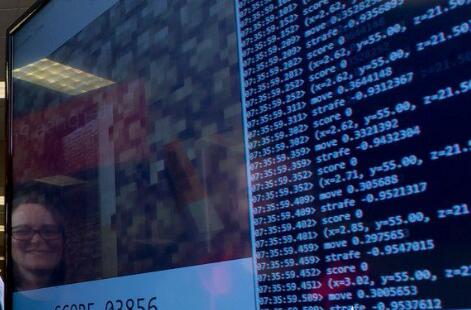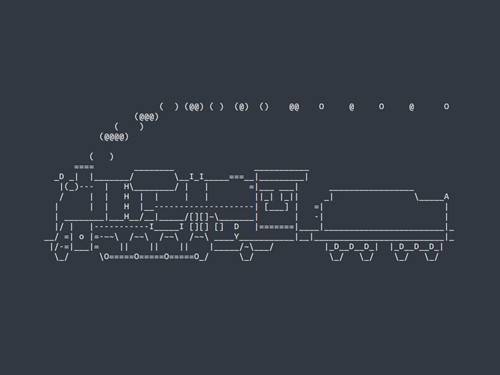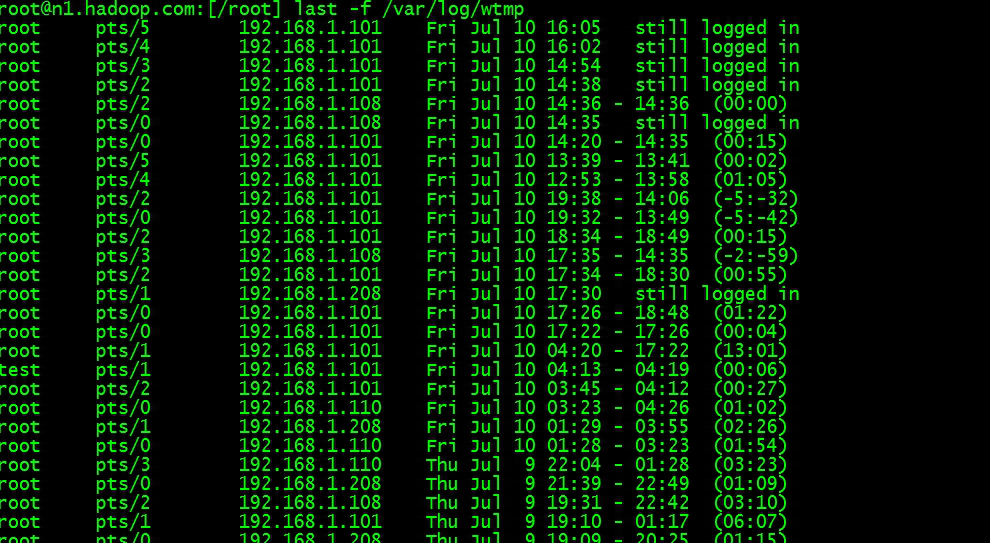作者:多米音乐_34473808 | 来源:互联网 | 2023-09-16 20:48
最近做了一个粒子动画,需要把关键帧数据导入C4D中去渲染。国内不好找这方面的资源,有点资源也收费,希望这个工作对相关人员有帮助。根据C4D官方网发布的SDK案例URL(https:
最近做了一个粒子动画,需要把关键帧数据导入C4D中去渲染。国内不好找这方面的资源,有点资源也收费,希望这个工作对相关人员有帮助。根据C4D官方网发布的SDK案例 URL(https://github.com/PluginCafe/cinema4d_py_sdk/tree/824760b6aa2e6405f17b92a128ddba4f3c43ea70))。参照其中有一个做了一个导入关键帧动画数据,用python脚本导入非常方便。该案例如下图1所示:

图1 下载的案例文件
该案例中粒子动画过程如下图2:

图2 案例动画效果
该案例中,粒子的坐标与方向是在python中写好函数生成, 其python脚本如下Code1:
code 1:
#Boids for Py4D by smart-page.net
import c4d
import math
import random
#environment
minx = -2000
maxx = 2000
miny = 1000
maxy = 3000
minz = -2000
maxz = 2000
#boids params
boids_number = 100
target_maxspeed = 60
boid_maxspeed = 50
boid_distance = 200
frame = None
rand = None
target = c4d.Vector()
targetvec = c4d.Vector(0)
bpos = None
bvel = None
def main():
global tp
global doc
global frame
global bpos
global bvel
frame = doc.GetTime().GetFrame(doc.GetFps())
if frame==0:
tp.FreeAllParticles()
tp.AllocParticles(boids_number)
lt = c4d.BaseTime(1000)
bpos = []
bvel = []
for i in tp.GetParticles():
tp.SetLife(i, lt)
bpos.append(tp.Position(i))
bvel.append(tp.Velocity(i))
moveboids(i)
set_target()
movetarget()
def set_target():
v = c4d.Vector()
for x in bpos:
v +=x
v = v / len(tp.GetParticles())
op[c4d.ID_USERDATA, 1].SetRelPos(v) def moveboids(c):
bvel[c] += rule1(c) + rule2(c) + rule3(c) + rule4(c)
bvel[c] = limitspeed(bvel[c], boid_maxspeed)
tp.SetVelocity(c, bvel[c])
vel=bvel[c].GetNormalized()
side = c4d.Vector(c4d.Vector(0,1,0).Cross(vel)).GetNormalized()
up = vel.Cross(side)
m = c4d.Matrix(c4d.Vector(0), side, up, vel)
tp.SetAlignment(c, m)
tp.SetPosition(c, bpos[c] + bvel[c])
def rule1(c):
v = c4d.Vector()
for i, b_pos in enumerate(bpos):
boid_pos = bpos[c]
if b_pos == boid_pos:
continue
v += boid_pos - b_pos
v /= len(tp.GetParticles())
return (bvel[c] -v) / 100
def rule2(c):
d = 0
k = 0
for i, b_pos in enumerate(bpos):
if (b_pos - bpos[c]).GetLength() k += 1
pos = bpos[c]
dif = (pos - b_pos)
if dif.GetLength() >= 0:
dif = math.sqrt(boid_distance) - dif
elif dif.GetLength() <0:
dif = -math.sqrt(boid_distance) - dif
d += dif
if k == 0: return
return bvel[c] - d / 4
def rule3(c):
v = c4d.Vector()
for i in bpos:
v += bvel[c]
v /= len(tp.GetParticles())
return bvel[c] + v / 30
def rule4(c):
return (target - bpos[c]) / 100
def movetarget():
global target
global targetvec
rand = random.Random(1)
rand.seed(frame)
if target.x targetvec.x += rand.random() * target_maxspeed
targetvec.y += rand.random() * target_maxspeed
targetvec.z += rand.random() * target_maxspeed
if target.x > maxx or target.y > maxy or target.z > maxz:
targetvec.x -= rand.random() * target_maxspeed
targetvec.y -= rand.random() * target_maxspeed
targetvec.z -= rand.random() * target_maxspeed
targetvec = limitspeed(targetvec, target_maxspeed)
target += targetvec
def limitspeed(v, speed):
if v.GetLength() > speed:
v = v*(speed / v.GetLength())
return v
当然我不需要这些函数,粒子的位置与方向数据从外部txt文件导入。我的数据已经通过opengl计算好,记录成文本文件。文件格式内容示例如下图3所示:
 图3 外部数据
图3 外部数据
图3中每一帧中有多行数据,每一帧的第一行是提示文字用来表示第几帧,后续每一行数据赋给一个粒子。一行数据有6个,前3个为坐标、后3个为方向。现在只需将文件导入,并分析出每一帧中的数据,将每一帧中每一行数据分别赋给粒子。将案例中的代码修改,并得到下面的示例代码Code2:
code 2:
# Boids for Py4D by smart-page.net
import c4d
import math
import random
# boids params
boids_number = 100 #粒子数量
currentframe = None #当前动画帧
frame_step = boids_number+1 #导入的文件中每一帧的数据,+1是把"frameX"这一行也算上
frame_total = 0
def main():
global tp
global doc
global currentframe
currentframe = doc.GetTime().GetFrame(doc.GetFps()) #获取当前帧
if currentframe == 0:
tp.FreeAllParticles()
tp.AllocParticles(boids_number) #生成粒子
lt = c4d.BaseTime(1000) #粒子的生命
filename = op[c4d.ID_USERDATA, 2] #读入的数据,本文后面解释如何添加该数据
with open(filename, 'r') as fn: # 分析打开的外部文件
lines = fn.readlines()
frame_total = int(len(lines) / frame_step)
frame = 0
i=1
for frame in range(frame_total):
if frame == currentframe:
t_lines = lines[frame * frame_step:frame * frame_step + frame_step - 1] #以frame_step为步长提取每一帧的数据。或许还有更好的方法,暂时没去优化。
if i == tp.GetParticles():
i=1
for line in t_lines:
if line == t_lines[0]: #将每一帧的第一行提示文字过滤掉。
print(line)
continue
else:
x, y, z, dx, dy, dz = line.split()
#print(x, y, z, dx, dy, dz)
pos = c4d.Vector(float(x), float(y) , float(z)) #粒子的坐标
vol = c4d.Vector(float(dx) , float(dy), float(dz) ) #粒子的方向
tp.SetLife(i, lt) # set life time for particle i
vel = vol.GetNormalized() #下面几行是将方向向量作用到粒子
side = c4d.Vector(c4d.Vector(0, 1, 0).Cross(vel)).GetNormalized()
up = vel.Cross(side)
m = c4d.Matrix(c4d.Vector(0), side, up, vel)
tp.SetAlignment(i, m)
tp.SetPosition(i,pos) # set postion(x,y,z)
#tp.SetVelocity(i,vol)
i=i+1
c4d.EventAdd()
if __name__=='__main__':
main()
文件导入时只需在C4D中添加文件,如下图4:

图4 添加的外部文件
具体添加过程如下:
1)选中python标签,如下图所示。

2)然后,进入用户数据管理器,如下图所示。

3)接着,增加一个data,如下图所示。

4)在数据类型(Data Type)中选择“Filename”,如下图所示。

5)保存。然后,去选择电脑上txt文件。如下图所示。

6)最关键一步,鼠标左键按住托动data到python脚本中,将数据赋给一个变量。如下图中所示,外部数据源赋给了变量filename。

7)最后,渲染的结果展示。
用昆虫构成快速奔跑的马:

昆虫构成猛犸象:

昆虫构成鲨鱼

终于发表了论文(欢迎引用,谢谢):
Chen Q, Luo G, Tong Y, et al. Shape‐constrained flying insects animation[J]. Computer Animation and Virtual Worlds, 2019: e1902.
论文DEMO:https://www.youtube.com/watch?v=4SfVb3ZEQAw
C4D 开发人员支持文档URL(Python: https://developers.maxon.net/docs/Cinema4DPythonSDK/html/index.html)。
TP particle 开发文档参见:https://public.niklasrosenstein.com/cinema4d/docs/python/R13.058/modules/c4d.modules/thinkingparticles/TP_MasterSystem/index.html。
That’s all. 希望对相关人员有帮助。